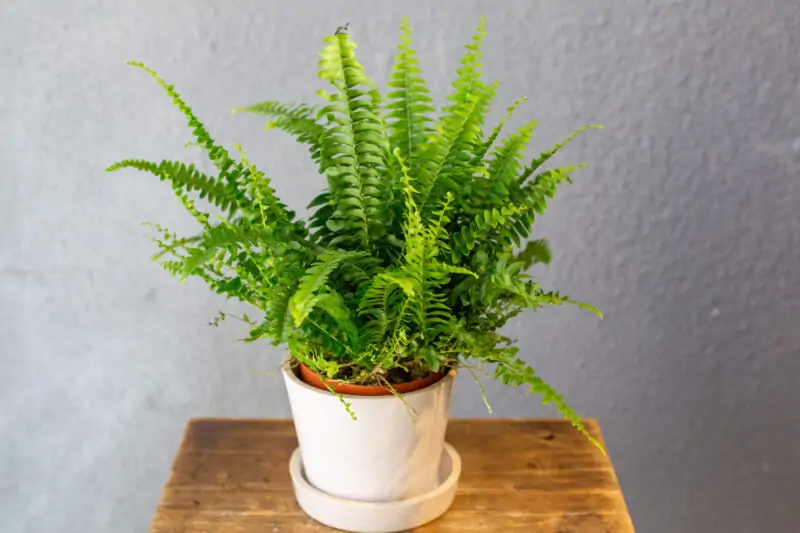Do Ferns Come Back Every Year? Tips for Growing and Winter Care

Do ferns come back every year? This is a question many gardeners ask, especially those new to gardening. The answer is not straightforward because it depends on several factors. In this article, we’ll explore the growth cycle of ferns and what affects their ability to come back every year. We’ll also look at specific care instructions for different fern varieties, so you can keep them healthy and thriving all year round.
Do Ferns Come Back Every Year?
The short answer is yes; most fern types come back each year if they receive proper care during their growing season and overwintering period. However, some species are deciduous or lose their leaves in winter while others remain evergreen throughout the colder months.
Fern plants grow from spores rather than seeds, like other flowering plants such as roses or sunflowers. This means they have a unique life cycle with distinct stages, including germination, growth into mature fronds (leaves), reproduction by producing spores, then dying off before starting again from scratch next spring when conditions improve once more!
Understanding Fern’s Growth Cycle
To understand how best to help your fern thrive over time, it’s important to understand its natural lifecycle first!
Factors Affecting Fern’s Ability To Come Back Every Year
Several factors affect whether your beloved greenery will return after winter ends:
USDA Hardiness Zone Requirements
One major factor is knowing which hardiness zone your fern is suited for. These ratings take into account average annual minimum temperatures across various regions within North America, ranging between 1a-13b zones where lower numbers represent colder climates while higher ones indicate warmer areas.
Humidity Requirements
Another key factor is humidity levels. Too much moisture may cause root rotting diseases, whereas too little can lead to dehydration.
Light Requirements
Ferns also require a certain amount of indirect light but should avoid direct sunlight, which may cause leaf scorching. Indoor ferns need more lighting than outdoor ones because they don’t receive as much natural sunlight; placing them near south-facing windows or using artificial grow lights can help ensure healthy growth throughout the year!
Caring for Specific Fern Varieties
Different fern plants have varying needs and preferences when it comes to care instructions, so let’s take a closer look at two popular varieties: Boston Fern and Outdoor Ferns.

Boston Fern: Overwintering and Maintenance
Many gardeners love Boston fern due to its lush foliage, which makes it perfect for adding greenery indoors during colder months! To keep your plant happy over winter:
- Keep soil moist but not soggy.
- Place in bright indirect light.
- Mist regularly with a water spray bottle.
Once spring arrives, move your plant back outside where you’ll want to place it in an area that receives partial shade rather than full sun exposure. This will help prevent leaves from burning while still receiving enough warmth needed for optimal growth!
Ensuring Optimal Growth For Outdoor Ferns

Outdoor fern species typically thrive best when grown in shaded areas such as under trees or alongside buildings. They do well if planted in humus-rich soils with good drainage (i.e., no standing water). Here are some additional tips on how best to maintain their health:
- Water frequently during growing seasons (typically late spring through early fall).
- Cut away old fronds once new ones begin emerging each season.
- Use pruning shears instead of scissors!
By following these basic guidelines along with paying attention to specific requirements regarding humidity levels and USDA zone ratings, you’ll be able to provide ideal conditions allowing various fern species to flourish inside your home or in your garden plot!
FAQs
Let’s now address some common questions gardeners have about ferns.
Outdoor fern species typically go dormant during winter months, so it’s important to prepare them for this period by cutting back any old fronds that may be dying off. This will help prevent potential pest infestations and encourage new growth in the spring. You can also cover your plants with a layer of mulch or burlap cloth if you live in an area prone to freezing temperatures.
If you’re keeping potted fern indoors over the winter season, make sure they receive adequate light exposure as well as humidity levels around 50%. Watering should be done sparingly since soil tends to dry out slower than outdoor soils due to less air circulation available within home environments; aim to keep the top inch moist but not waterlogged!
It is best to prune away dead/brown leaves from the plant base using shears throughout the growing seasons (typically late spring through early fall). Doing so helps promote healthy foliage growth while avoiding the buildup of disease-causing organisms on decaying parts! However, avoid pruning too much too soon into the growing season because this could stunt development before new shoots emerge again next year.
When trimming fronds, use a sharp pair of scissors or shears to cut cleanly without damaging surrounding tissue. Avoid tearing leaves, which could cause open wounds attracting pests and disease agents onto the plant surface.
If your indoor or outdoor container seems overcrowded with roots poking out of the drainage holes at the bottom, it’s time to repot! Choose a slightly larger pot size and add fresh potting mix made of a mixture of peat moss, perlite, vermiculite, etc. Lay down stones at the base to provide better drainage for overall success.
Remove any damaged or discolored fronds to prevent disease from spreading.
Water your ferns sparingly but regularly, keeping the soil moist but not waterlogged.
Fertilize once a month with an all-purpose liquid fertilizer diluted in water.
Conclusion
In conclusion, fern plants are beautiful and hardy perennial plants that can add vibrant greenery indoors or outdoors. To help them come back every year, it’s essential to understand their growth cycle and requirements for optimal health. By following these care instructions specific to different varieties of ferns along with basic guidelines regarding humidity levels and USDA zone ratings, you’ll be able to keep your plant thriving throughout the year! So go out there and give those lovely fiddleheads the tender loving care they deserve today!